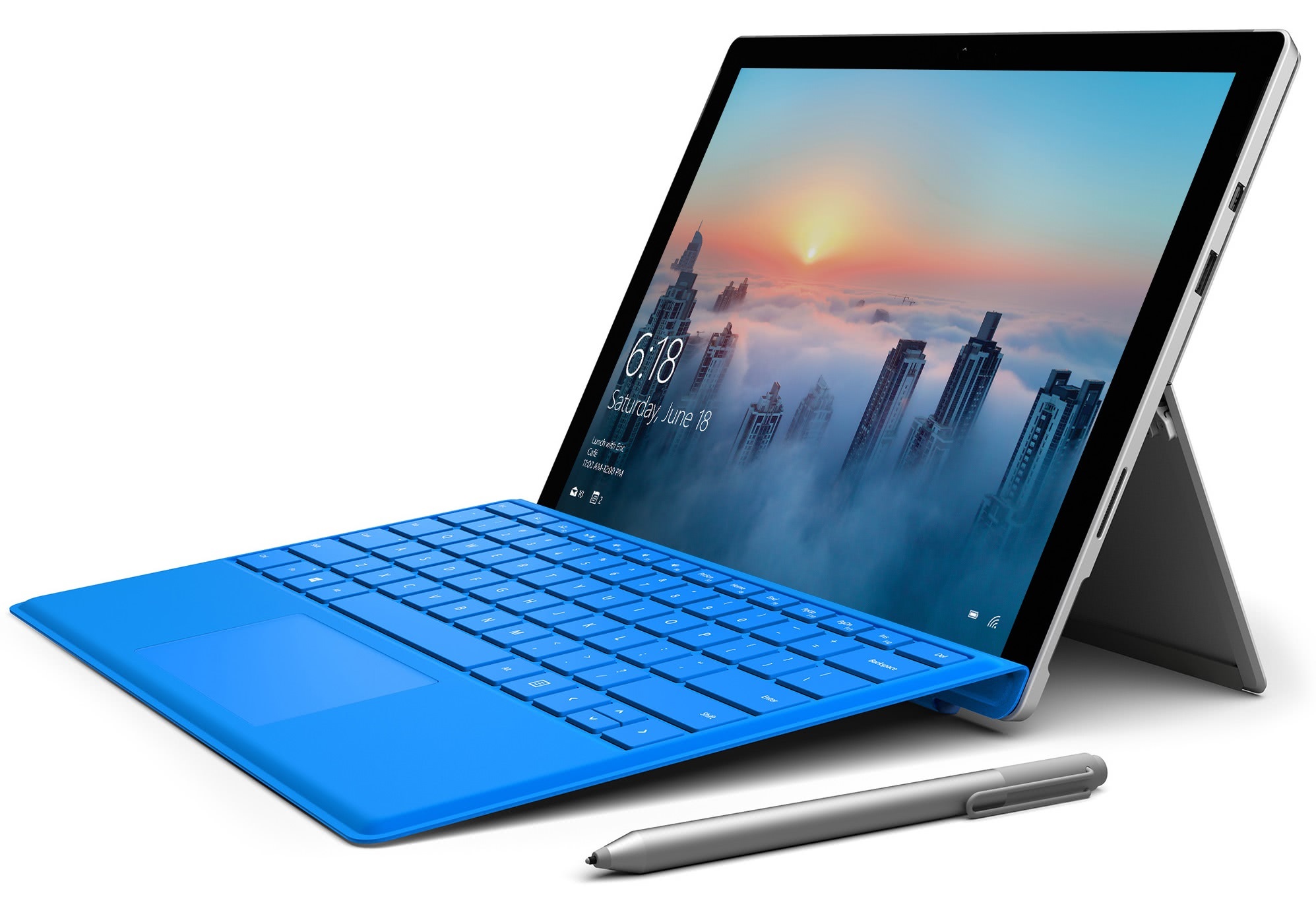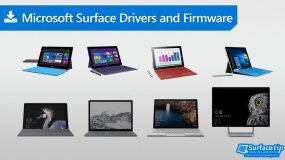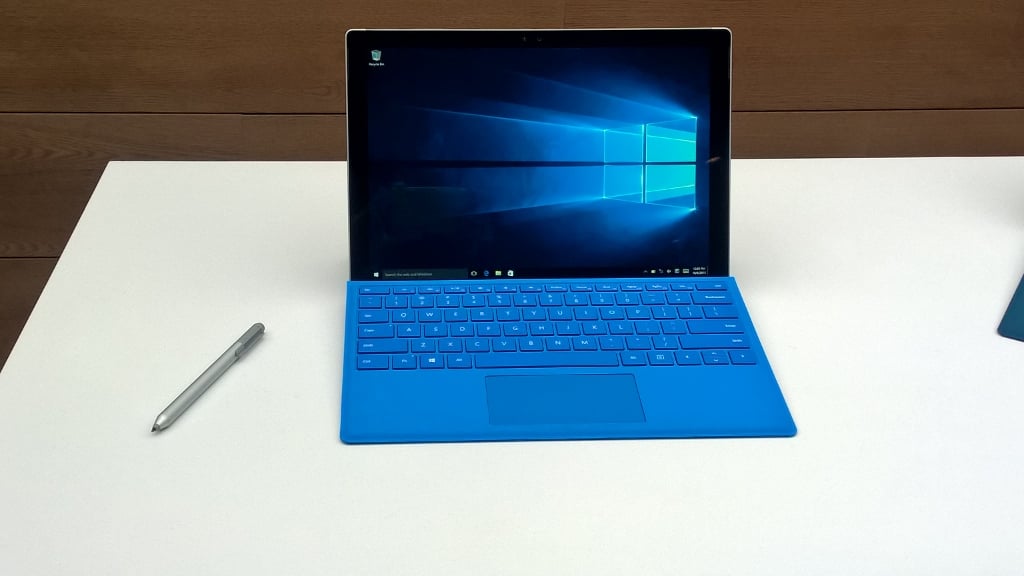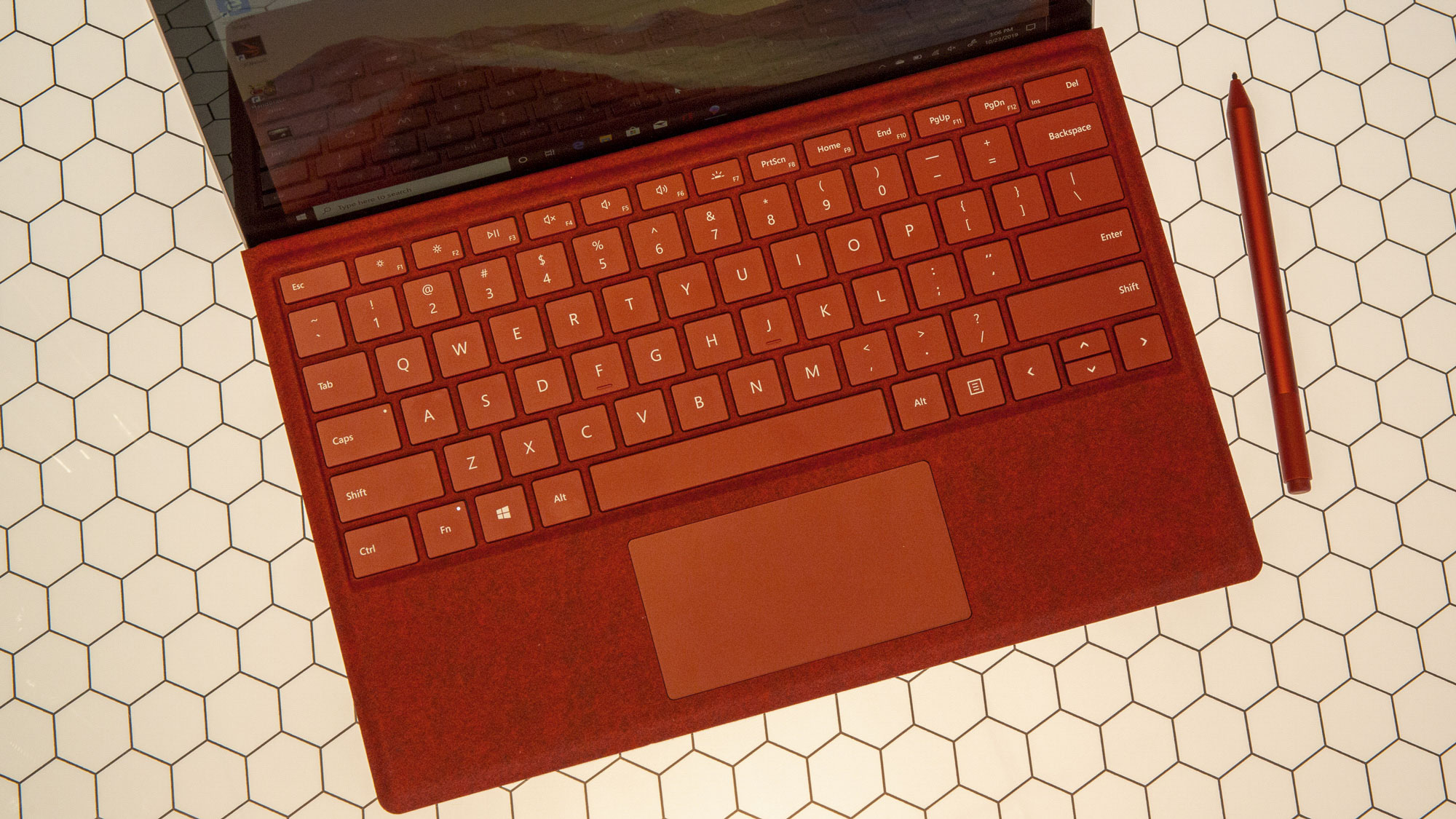Surface Pro 4 Tricks
Our video series Be a Surface Pro! Is growing with a new video every Wednesday. In this video we look back on some of your favourite Surface Pro tips so far. In this video, I show several productivity tips and tricks for working with the Surface Pro 4! These also apply to the Surface Book too! I show how to use th. If you own one of Microsoft’s latest Surface devices—the Surface Book 2 or Surface Pro 6—you’ll want to pause.





Surface Pro 4 Sale
Launch taskbar programs with your keyboard
Many of us—especially users of the Start Menu-less Windows 8—use the Windows taskbar as a quick launch bar, populating it with our day-to-day programs. Opening those programs is as simple as clicking them, but there's actually a faster way to launch software on your taskbar: Simple keyboard combinations.
Every program to the right of the Start button is assigned its own numerical shortcut, with the first program being '1,' the second being '2,' and so on, all the way to the 10th taskbar shortcut, which gets '0.' Pressing the Windows key, plus the number of the program you want to open, launches it.
Quickly launch a new instance of a program
Those taskbar icons can also be used to quickly launch a second (or third, or fourth, or…) instance of a program—a fresh browser window alongside an already populated one, for instance, or another Windows Explorer window.
Doing so is easy: Just hold down the Shift button, then open the program as you normally would, either via a left click of the mouse or the aforementioned quick-launch keyboard trick. Boom! A new, clean version of the software appears alongside the one you already have open.
Copy a file path to the Clipboard
Why would you ever want to copy a file path to the Windows Clipboard? Well, you may just want to tell someone how to browse to a common location for a given application. I, however, use it to mark the spot of a local file I've found using Windows Explorer, so it'll be handy later—to upload photos to Facebook or document attachments to Outlook emails, for instance.
To copy a file path to your Clipboard, hold down the Shift key, right-click the file or folder you want, then select the newly revealed 'Copy as Path' option. Now you can paste the info wherever you'd like—including the 'File name' portion of Browse dialog boxes, with no extra browsing required.
More secret right-click options
Secret right-click options revealed by the Shift key don't end with file paths, though.
The basic Send to tool that appears as an option when you right-click on a file or folder is handy enough indeed, allowing you to move the item quickly to a handful of locations on your PC, add it to a .zip archive, or send it off in an email or fax.
But that's just the tip of the iceberg! Holding down the Shift key as you right-click a file or folder will add an absolute ton of new folder locations to the basic Send to menu.
Tweaking the Send To menu
What's that, you say? None of the stock Send to options offer the ability to shuffle your files to the locations you commonly use? Force the issue!
First, create shortcuts to the folder locations you're like to add to the Send To menu by right-clicking them, then selecting Send to > Desktop (create shortcut). Once that's done, open Windows Explorer, then type shell:sendto in the location bar at the top, followed by Enter. You'll be brought to the location that holds your Send To options; just drag and drop in the shortcuts to the folders you want to add to the tool.
Erase the past
When you're shuffling files around willy-nilly, you're bound to accidentally drop one in the wrong folder—or almost more irritating, errantly make copies of a slew of files rather than simply dragging them to a new location. Arrrrrrrrg.
Rather than trying to track that missing file down or manually delete the legion of copies, whip out the universal Get Out of Jail Free card that, somewhat surprisingly, also works within Windows proper: Crtl + Z. The keyboard shortcut undoes your last action, restoring order when chaos suddenly appears. (Crtl + C and Crtl + V for copying and pasting, respectively, also work properly within Windows.)
Add mouse-friendly checkboxes to icons
For every geek who swears by keyboard shortcuts, there are a dozen casual users who rely on their mice. Activating icon checkboxes lets you select multiple files to manage simultaneously, without having to hold down the Ctrl button as you click each one.
…unless you add checkboxes to Windows icons, that is. In Windows 7, type Folder options into the Start Menu's search bar. Next, open the 'View' tab in the window that appears and ensure the 'Use check boxes to select items' checkbox is checked. In Windows 8, just open Windows Explorer, open the 'View' tab, and check the 'Item check boxes' box in the Show/Hide pane.
DIY keyboard shortcuts
Windows has a ton of keyboard shortcuts baked right in, but you can roll your own to open the software of your choice lickety-split—no mouse-clicking or launcher-hunting required.
Right-click the program's launch icon and select Properties. Open the Shortcut tab, then click in the 'Shortcut key' field and press the key you want to use to launch the program. Windows will assign Ctrl + Alt + <key of your choice> as a keyboard shortcut to open the program. It's a seriously useful trick, especially if you don't want to stuff your taskbar full of quick-launch program icons. Don't forget to click OK when you're done to save the shortcut.
Browse all of the web or all of your PC from your taskbar
If your taskbar isn't already overflowing with software icons and their associated Jump Lists, you can add even more functionality with toolbars.
Right-click on your taskbar once again, select Properties, then open the Toolbars tab. A list of Windows' available toolbars appears/ Simply check the box next to ones you want to add to your taskbar and click OK. I like the Address and Desktop toolbars. Address plops a URL bar in your taskbar, which you can use to browse directly to any website in your default browser. Desktop adds a drop-down (drop-up?) menu you can use to browse to any folder or file on your PC. Sweet!
Some things to try if a USB device isn't working
http://www.pcworld.com/article/2474687/what-to-do-when-your-usb-device-doesnt-work.html#tk.nl_today
Also refer to the link in my signature for other Surface Pro tips/tricks.
Many of us—especially users of the Start Menu-less Windows 8—use the Windows taskbar as a quick launch bar, populating it with our day-to-day programs. Opening those programs is as simple as clicking them, but there's actually a faster way to launch software on your taskbar: Simple keyboard combinations.
Every program to the right of the Start button is assigned its own numerical shortcut, with the first program being '1,' the second being '2,' and so on, all the way to the 10th taskbar shortcut, which gets '0.' Pressing the Windows key, plus the number of the program you want to open, launches it.
Quickly launch a new instance of a program
Those taskbar icons can also be used to quickly launch a second (or third, or fourth, or…) instance of a program—a fresh browser window alongside an already populated one, for instance, or another Windows Explorer window.
Doing so is easy: Just hold down the Shift button, then open the program as you normally would, either via a left click of the mouse or the aforementioned quick-launch keyboard trick. Boom! A new, clean version of the software appears alongside the one you already have open.
Copy a file path to the Clipboard
Why would you ever want to copy a file path to the Windows Clipboard? Well, you may just want to tell someone how to browse to a common location for a given application. I, however, use it to mark the spot of a local file I've found using Windows Explorer, so it'll be handy later—to upload photos to Facebook or document attachments to Outlook emails, for instance.
To copy a file path to your Clipboard, hold down the Shift key, right-click the file or folder you want, then select the newly revealed 'Copy as Path' option. Now you can paste the info wherever you'd like—including the 'File name' portion of Browse dialog boxes, with no extra browsing required.
More secret right-click options
Secret right-click options revealed by the Shift key don't end with file paths, though.
The basic Send to tool that appears as an option when you right-click on a file or folder is handy enough indeed, allowing you to move the item quickly to a handful of locations on your PC, add it to a .zip archive, or send it off in an email or fax.
But that's just the tip of the iceberg! Holding down the Shift key as you right-click a file or folder will add an absolute ton of new folder locations to the basic Send to menu.
Tweaking the Send To menu
What's that, you say? None of the stock Send to options offer the ability to shuffle your files to the locations you commonly use? Force the issue!
First, create shortcuts to the folder locations you're like to add to the Send To menu by right-clicking them, then selecting Send to > Desktop (create shortcut). Once that's done, open Windows Explorer, then type shell:sendto in the location bar at the top, followed by Enter. You'll be brought to the location that holds your Send To options; just drag and drop in the shortcuts to the folders you want to add to the tool.
Erase the past
When you're shuffling files around willy-nilly, you're bound to accidentally drop one in the wrong folder—or almost more irritating, errantly make copies of a slew of files rather than simply dragging them to a new location. Arrrrrrrrg.
Rather than trying to track that missing file down or manually delete the legion of copies, whip out the universal Get Out of Jail Free card that, somewhat surprisingly, also works within Windows proper: Crtl + Z. The keyboard shortcut undoes your last action, restoring order when chaos suddenly appears. (Crtl + C and Crtl + V for copying and pasting, respectively, also work properly within Windows.)
Add mouse-friendly checkboxes to icons
For every geek who swears by keyboard shortcuts, there are a dozen casual users who rely on their mice. Activating icon checkboxes lets you select multiple files to manage simultaneously, without having to hold down the Ctrl button as you click each one.
…unless you add checkboxes to Windows icons, that is. In Windows 7, type Folder options into the Start Menu's search bar. Next, open the 'View' tab in the window that appears and ensure the 'Use check boxes to select items' checkbox is checked. In Windows 8, just open Windows Explorer, open the 'View' tab, and check the 'Item check boxes' box in the Show/Hide pane.
DIY keyboard shortcuts
Windows has a ton of keyboard shortcuts baked right in, but you can roll your own to open the software of your choice lickety-split—no mouse-clicking or launcher-hunting required.
Right-click the program's launch icon and select Properties. Open the Shortcut tab, then click in the 'Shortcut key' field and press the key you want to use to launch the program. Windows will assign Ctrl + Alt + <key of your choice> as a keyboard shortcut to open the program. It's a seriously useful trick, especially if you don't want to stuff your taskbar full of quick-launch program icons. Don't forget to click OK when you're done to save the shortcut.
Browse all of the web or all of your PC from your taskbar
If your taskbar isn't already overflowing with software icons and their associated Jump Lists, you can add even more functionality with toolbars.
Right-click on your taskbar once again, select Properties, then open the Toolbars tab. A list of Windows' available toolbars appears/ Simply check the box next to ones you want to add to your taskbar and click OK. I like the Address and Desktop toolbars. Address plops a URL bar in your taskbar, which you can use to browse directly to any website in your default browser. Desktop adds a drop-down (drop-up?) menu you can use to browse to any folder or file on your PC. Sweet!
Some things to try if a USB device isn't working
http://www.pcworld.com/article/2474687/what-to-do-when-your-usb-device-doesnt-work.html#tk.nl_today
Also refer to the link in my signature for other Surface Pro tips/tricks.
